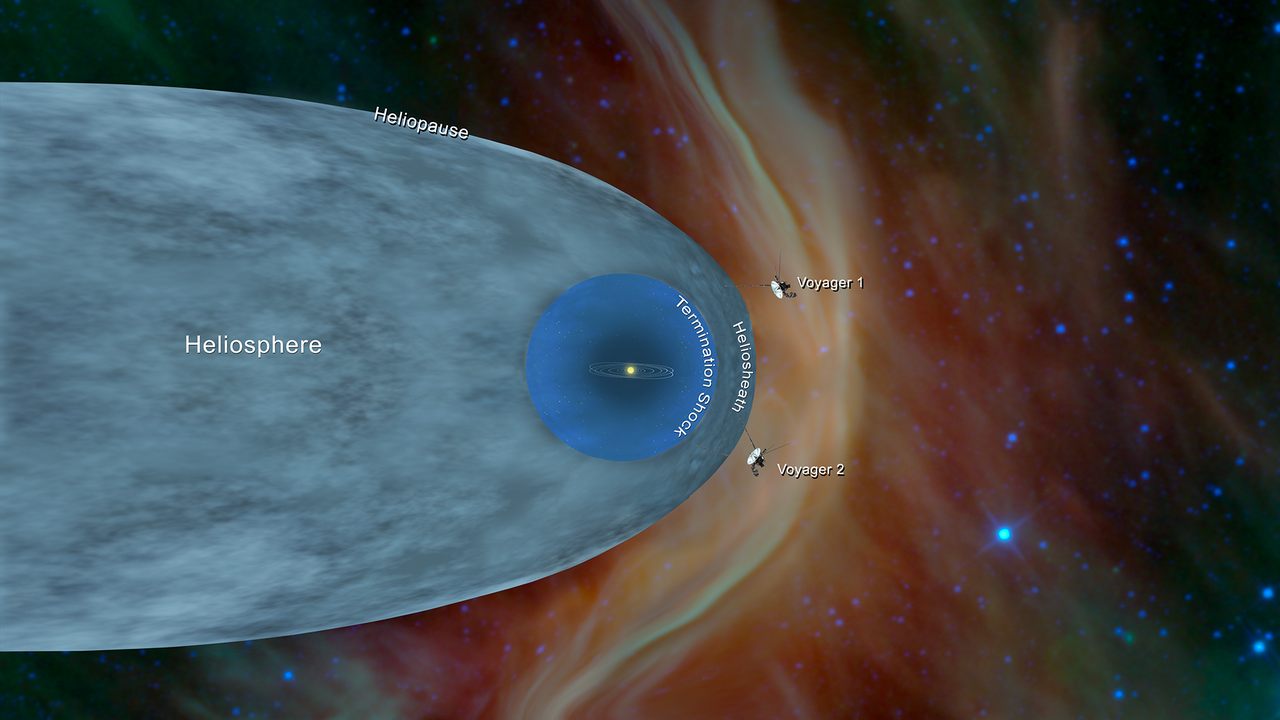![]()
By analyzing the oxygen isotopes (varieties of an element that have some extra neutrons) of these refractory inclusions, the research team has determined that the differences in composition between the sun, planets and other solar system materials were inherited from the protosolar molecular cloud that existed even before the solar system. The results of their study have been recently published in Science Advances .
"It has been recently demonstrated that variations in isotopic compositions of many elements in our solar system were inherited from the protosolar molecular cloud," said lead author Alexander Krot, of the University of Hawaii. "Our study reveals that oxygen is not the exception."
In case you are keeping track:
Super-Earth exoplanets often have giant 'Jupiter' bodyguards | Space | EarthSky

Planetary systems with both super-Earths and Jupiter-type planets may be common, according to a new study. As in our own solar system, the giant planets would act as “bodyguards” protecting the smaller planets from asteroid impacts.
Artist’s concept of a planetary system with 2 super-Earths and 1 giant Jupiter-like planet. New computer simulations suggest that such systems may be common. Image via MPIA graphics department .
* * *
An international group of astronomers, led by Martin Schlecker of the Max Planck Institute for Astronomy (MPIA), has just announced a new study showing that this kind of planetary arrangement may be more common that previously known. The results suggest that rocky Earth-type planets – at least super-Earths as in this study – will often be accompanied by larger Jupiters orbiting further out, just like in our own solar system.
New Voyager Readings: Space Is Much Denser Outside Solar System

Voyager 2, a space probe launched in 1977 that finally made its way out of our solar system in 2018, is recording some weird data out in interstellar space.
As it passed the boundary of our solar system, Voyager 2 picked up on an increase rather than a decrease in the particle density in its surroundings, according to ScienceAlert . Based on the assumption that it's, well, the void of space, astronomers expected the density of interstellar space to drop — but now Voyager 2 is confirming similar reports from Voyager 1 years prior.
Six solar system oddities and why they're important - Big Think

Credit: NASA/Johns Hopkins University Applied Physics Laboratory/Carnegie Institution of Washington
* * *
Unlike many other items on this list, this strange occurrence is likely caused by a fairly mundane mechanism. As the planet, which is made primarily of metal, has a high iron content, scientists speculate that the planet is shrinking as it continues to cool down from the high internal temperatures it had when it formed.
However, this isn't the end of things. Why Mercury has such a higher iron content remains a mystery.
This may worth something:
Our Solar System Has a Mysterious Region Where Objects Have 'Unusual Behaviors' [Video]
Oxygen isotopic heterogeneity in the early Solar System inherited from the protosolar molecular

The Sun is 16 O-enriched (Δ 17 O = −28.4 ± 3.6‰) relative to the terrestrial planets, asteroids, and chondrules (−7‰ < Δ 17 O < 3‰). Ca,Al-rich inclusions (CAIs), the oldest Solar System solids, approach the Sun's Δ 17 O. Ultraviolet CO self-shielding resulting in formation of 16 O-rich CO and 17,18 O-enriched water is the currently favored mechanism invoked to explain the observed range of Δ 17 O.
( A to D and F ) Backscattered electron images and ( E ) combined x-ray elemental map in Mg (red), Ca (green), and Al (blue) of the grossite-bearing CAIs (A) 1579-2-1 , (B) MB2-15 , (C) 1573-4-11 , (D) MB111-33 , and (E and F) 4C from Acfer 214 (CH) and QUE 94627 (CB). The region outlined in (E) is shown in (F).
Voyager missions find sharp increase in density of space beyond our solar system- Technology

NASA's spacecraft Voyager 2 has reported a significant increase in the density of space outside the solar system. Interestingly, the farther the craft went into outer space, the density kept rising, thereby challenging our common notion that space is a vacuum. The results sent by Voyager 2 have matched with the findings of Voyager 1 which calculated the density at a different location in interstellar space.
The American space agency's Jet Propulsion Laboratory (JPL) is responsible for sending and managing both the crafts. The Voyager missions are a part of the NASA Heliophysics System Observatory, sponsored by the Heliophysics Division of the Science Mission Directorate in Washington. Voyager 2 was initially sent out to study Jupiter, Saturn, Uranus and Neptune in greater detail and it has managed to send several discoveries like a 14th moon at Jupiter. It was launched on 20 August 1977.
Fusion-Drive Spacecraft: Express Solar System Travel, If We Figure It Out

A team of scientists is furiously working away at a spacecraft thruster that they say could reach Saturn's moon Titan in less than half the time it took the satellite Cassini .
There's just one catch: They're talking about a fusion drive, Universe Today reports — and thus far scientists are totally unable to harness the power of nuclear fusion in any sort of practical way. But if it somehow comes to fruition, the fusion drive could radically enhance the way we explore the cosmos.

No comments:
Post a Comment